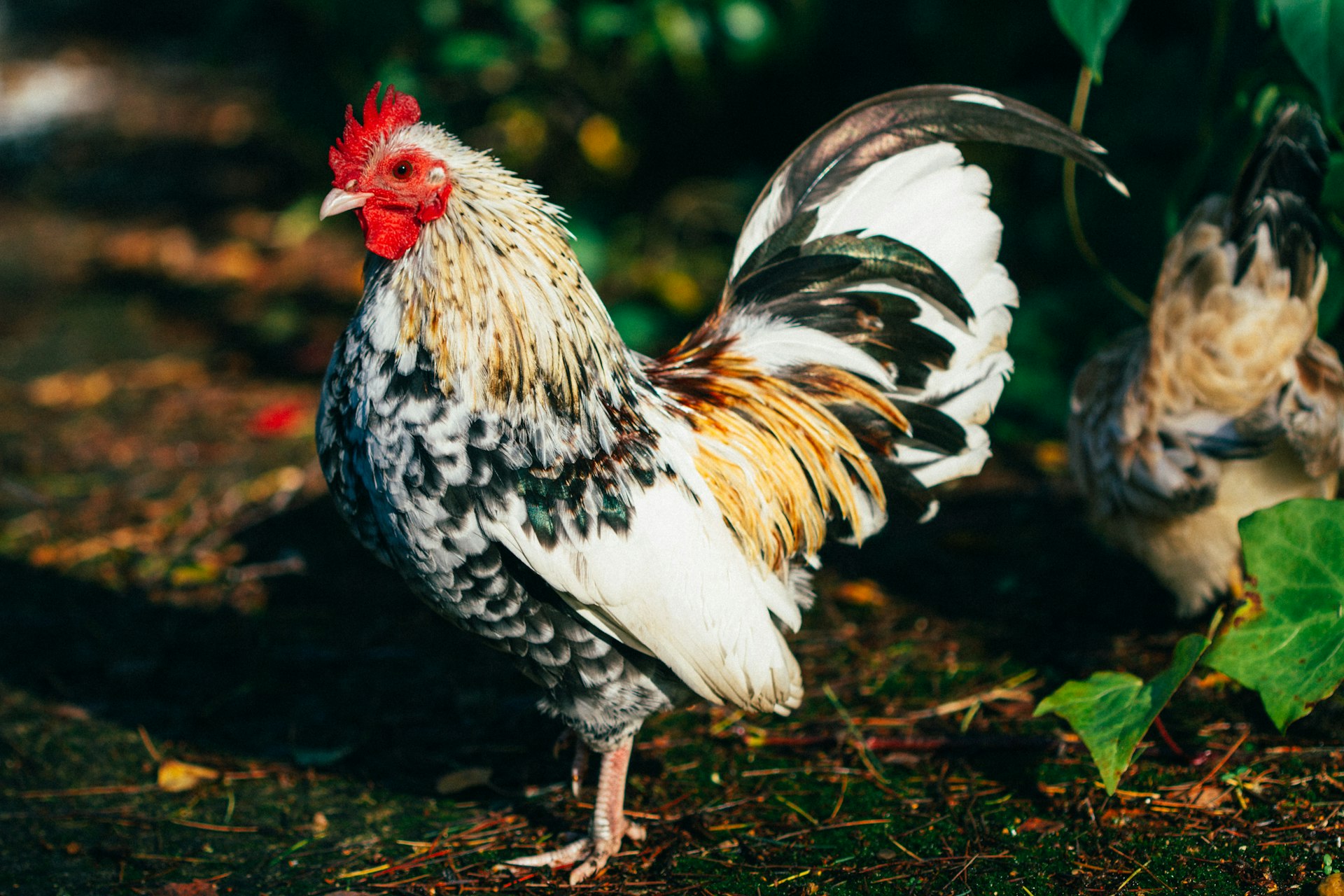Chickens might seem like just another farm animal, but they’re surprisingly fascinating creatures. Beyond their role in providing eggs and meat, chickens have some quirky and impressive traits that make them stand out. Let’s dive into eight fun facts about these feathered friends that you might not have known!
1. Chickens Are Descendants of Dinosaurs
A Brief History of Chickens
Believe it or not, chickens are modern-day descendants of dinosaurs! More specifically, they share a common ancestor with the theropods—bipedal dinosaurs like the mighty T. rex. Over millions of years, these ancient creatures evolved into the chickens we know today.
How Dinosaurs and Chickens Are Related
The link between dinosaurs and chickens is found in their similar skeletal structures. For example, both have a wishbone, which is a remnant from their dinosaur ancestors. This evolutionary connection helps scientists understand how birds evolved from their prehistoric predecessors.
2. Chickens Can Recognize Faces
The Science Behind Face Recognition
Chickens have a remarkable ability to recognize and remember human faces. Research shows that chickens use their excellent vision to distinguish between individual faces, much like how we recognize each other. They can remember a face for several months, showing a level of cognitive ability that’s pretty impressive.
Practical Uses for Chicken Recognition
This face recognition skill isn’t just fascinating; it can be quite useful. For instance, farmers can use this trait to develop stronger bonds with their flock, making it easier to manage and care for them. Chickens might even remember the faces of those who feed them!
3. Chickens Have a Unique Language
The Different Types of Clucks and Calls
Chickens have a complex language consisting of various clucks, crows, and other sounds. Each type of call can signify different things, from alerting others to the presence of predators to communicating with their chicks. Scientists have identified over 30 different vocalizations chickens use to express themselves.
What Chickens Are Communicating
Understanding chicken language can be quite revealing. For example, a hen’s “egg song” is a series of loud cackles she makes after laying an egg, which seems to be a way of announcing her accomplishment. This kind of communication helps chickens interact and maintain social harmony within their groups.
4. Chickens Dream Just Like Us
What Chickens Dream About
Chickens experience REM sleep, which is the stage associated with dreaming in humans. While we can’t know for sure what chickens dream about, it’s likely related to their daily experiences, such as finding food or interacting with other chickens. Imagine a chicken dreaming of a cornfield—it’s both amusing and endearing!
The Science of Chicken Sleep
During sleep, chickens undergo cycles of light and deep sleep similar to humans. REM sleep in chickens indicates that they not only rest but also process information and experiences. This insight into their sleep patterns helps us understand their mental and emotional health better.

5. Chickens Can Count
Studies on Chicken Numeracy
Research has shown that chickens possess the ability to count. In various experiments, chickens have demonstrated the ability to recognize quantities and make simple numerical judgments. They can differentiate between sets of objects and even understand the concept of zero.
How Chickens Use Counting in the Wild
In the wild, chickens use their counting skills for practical purposes, such as keeping track of their flock members and foraging efficiently. This numeracy helps them avoid predators and locate food sources more effectively. Their counting ability highlights their intelligence and adaptability.
6. Chickens Have a Great Sense of Direction
Navigating Without GPS
Chickens have an impressive natural sense of direction. They can navigate their environment with remarkable precision, often using landmarks and the position of the sun to find their way. This innate GPS system helps them return to their roosts or specific feeding areas reliably.
The Chicken Compass: How It Works
Chickens rely on a combination of visual cues and internal navigation skills. They use the sun’s position and other environmental factors to orient themselves. This natural compass is crucial for their survival, especially in free-range settings where they need to find their way back home.
7. Chickens Can Feel Emotions
Emotional Range in Chickens
Chickens are not just robotic animals; they have a range of emotions. They can experience fear, happiness, and even jealousy. Their emotional responses are influenced by their interactions with other chickens and their environment. Observing their emotional behaviors provides a window into their complex inner lives.
How Chickens Express Their Feelings
Chickens express their emotions through vocalizations, body language, and behavior. For example, a chicken that’s excited might flap its wings or make a specific call, while a fearful chicken might retreat or hide. Understanding these signs can help in managing their well-being and improving their care.
8. Chickens Are Social Animals
The Pecking Order Explained
Chickens have a social hierarchy known as the pecking order. This system determines which chickens have dominance over others, influencing their access to resources and social interactions. The pecking order is established through various behaviors and helps maintain order within the flock.
How Chickens Form Social Bonds
Social bonds among chickens are essential for their well-being. They form strong relationships with their flock members, engaging in grooming, mutual preening, and other social activities. These bonds help reduce stress and contribute to the overall harmony of the group.